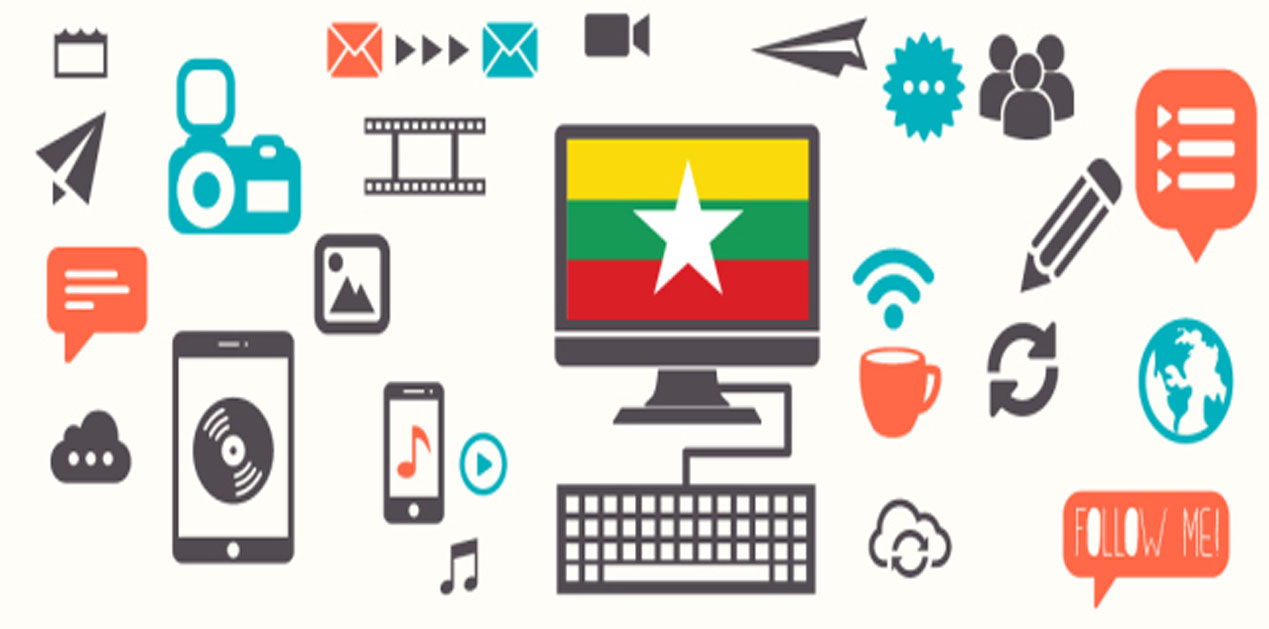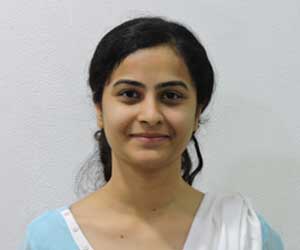Introduction
On Oct 1, 2019, Myanmar celebrated “U-day”, to mark the official transition from its homegrown digital font Zawgyi (pronounced as “zaw-jee”) to a unified font conforming to the international standards of “Unicode”.1 This is seen as a sweeping move to bring the country more in step with the rest of the digital world. 2Adopting the global standard of computing industry is expected to expedite the integration process and open the Myanmar markets to technology cooperation and applications.
Back in 1991, the international community adopted the Unicode standard for encoding, representing and handling text on a digital medium. It also defined the way in which text characters should be stored and processed. However, under the circumstances prevailing then, this Southeast Asian country had to come up with a Burmese standard for encoding Burmese texts and characters. 3 Native Myanmar language support in Windows computers was not available and Zawgyi was developed locally in 2006 to accommodate the need for computer communication in Myanmar. 5
Asia’s Budding Digital Node
The geographic eminence of Myanmar in Asia is hardly a matter contested but presently India’s gateway to South-East Asia is seen to be preparing for its digital presence in the region. The economic sanctions in bygone days had hampered the country’s technological pursuits with the rest of the world. Information Communication Technologies (ICT) and other upbeat mass market technologies in this country remained the prerogative of the rich for the longest time. At the time when geographic, cultural and linguistic barriers 5withered away with the World Wide Web, Myanmar was absorbed within its own borders and fault lines. From education to media, the dictatorship spelt out hardships for its people to remain virtually cut off from the rest of the world.
However, with its first generation of internet (read Facebook) users, the country is now an aspiring digital economy in Asia. This change can be traced back to 2010, when the country switched to democracy. Consequently, the cost of SIM cards fell from US$ 200 in 2012 to less than US$2 in 2017. 6This was accompanied by unrestricted access to online content which led to the fastest rise in mobile phone usage by any country in the last 10 years. 7
Though reluctant, the incumbent government eventually allowed the entry of foreign telecom companies in 2013 which resulted in mobile penetration rates soaring from 18.2% in 2014 to almost 90% in 2017.8This burgeoning population of first timers availed the leeway to indulge in new services at their disposal. However, the use of the digital connectivity was in a roundabout way, influenced by some of the pre-dated norms laid by the military junta. The same can be said to have contributed to a limited and awry sense of exposure to the virtual world amongst its people.
The Need for Reforms
For Myanmar, developing its own font has turned out to be a self-defeating move that instead restricted country’s access to a global digital space. Applications and websites developed outside of Myanmar assumed that users have devices - phones, laptops, tablets, smart watches, car displays, among others - that use Unicode.9Unicode standard is used by 94% of the websites today10 while in Myanmar, 90% of the websites operate on Zawgyi.11
This has posed a constant challenge for global technology companies and domestic users alike, where Zawgyi devices either missed the entire User Interface (UI) or any content created using Unicode. Even as technology companies did offer translations to capture the expanding market12, Facebook’s popularity prevailed over such uninspiring convertors and the larger integration of Myanmar with the rest of the world. While Internet has still fell short of covering up for the years of isolation of Myanmar.
Concurrently, all of the digital content produced by Myanmar’s rapidly growing population of Internet users was deemed to be flawed under a rather sketchy digital system. Searching, ordering, and manipulating content written in Zawgyi posed a nightmare for developers, for they had to account for all of the redundancies of Zawgyi’s inefficient coding scheme. Simultaneously, using any (read majority) software built for Unicode-compliant content was beyond the bounds of possibility.13 Delaying the de-facto universal standards in fact rendered a lot of data worthless.
The Facebook Conundrum
14
Myanmar’s phone ownership rates skyrocketed in just a span of half a decade, equipping people from cities to rural areas with an internet-enabled smartphone. Notably, despite having access to the Internet, most of this population used it for Facebook, which took up “over 85 percent of all internet traffic”.15
From the start, Facebook presented itself as a one-stop-shop for the long-awaited connectivity that eluded the citizens of this country. In his/her maiden spell, the average user turned to Facebook for socialising, news, entertainment, and even e-commerce. Typically pre-installed on their smartphone, this application provided instant updates from the pages of their preferred political parties, organisations or companies.16
Thus Facebook came handy for the modest needs and identity of the population. Facebook restored the traditional Burmese encoding standards that promoted Burmese language and characters, making the content all the more ergonomic for the citizens. Because of which search engines like Yahoo and Google were purposeless for the people who found their purpose at Facebook. 17
This tendency led to an over-reliance on Facebook as a content provider, also reflective of Myanmar’s stunted levels of digital literacy. Because Facebook became the common man’s go-to online platform, there was little incentive for its users to learn how to use or explore the wider world web to search for information. The act of curating one’s own content through Internet browsing develops one’s ability to analyze whether information found on the Internet is accurate and true. But because most users did not engage in such an activity, they were not be able to accurately discern fake information from real information on Facebook. 18
The above is often held for fueling inter-ethnic clashes in Myanmar. 2014 riots in Mandalay, which happened as a result of a false accusation against a teashop owner propagated by Burmese Facebook users, is an example of the consequences of low levels of critical digital literacy. Because those involved with spreading the accusation not only did not have the ability to identify fake news but also did not know that posting things on Facebook, regardless of whether the information shared is true or not, has widespread implications. In 2018, Reuters found more than 1,000 examples of posts, comments and pornographic images attacking the Rohingya and other Muslims on Facebook. 19The military too has resorted to Facebook as a powerful means of psychological warfare.20 Statistics have recorded the menace of hate speeches, radicalisation and propagandas have underlined the deep penetration of Facebook in Myanmar.
Towards a Digital Democracy
The government now seems to be treading a cautious bargain between freedom of expression and regulation on digital platforms. The digitally triggered ethnic violence in Myanmar has been appalling in recent years. Facebook had reported as its biggest challenge to prevent misinformation campaigns to be “the way text is displayed in Myanmar”. Now with the latest developments and the government's intervention for catching the bad content, we can hope for a net positive digitalisation of Myanmar.21
Favourably, Unicode for Myanmar languages has been refined and updated continuously since early days. Hence the Myanmar language will be featured automatically in global software, while searching data in the Myanmar language and the automatic translation system will be more accurate. Many of Myanmar’s ethnic languages such as Shan, Mon, Kayah, and Karen, are already supported within the Unicode Myanmar codespace.22 The graduation to Unicode is an uphill journey for the massive Zawgyi user base in Myanmar, but the destination is indicative of the digitally empowered and informed citizens.
This reform is further expected to take forward the Government of Myanmar’s (GOM) e-Governance Master Plan, developed with support from the Asian Development Bank (ADB) and approved by the Office of the President in September 2016. Without this transition, the envisioned digitally inclusive governance system would have been increasingly unachievable. The plan provides an overall framework for digital transformation and development of the country, wherein this transition will have huge implications.23
This reform is comparable to the process of democratisation and this time the government has taken a step to demolish the digital boundaries which have thwarted many developmental prospects till now. Akin to physical connectivity, there lies a huge potential for engagement and mutual growth with a better digital connectivity.
End Notes :
- "Make sure you don't get left behind in move to Unicode | The ...." 26 Sep. 2019, https://www.mmtimes.com/news/make-sure-you-dont-get-left-behind-move-unicode.html. Accessed 3 Dec. 2019.
- "Myanmar to become last country to adopt Unicode for ... - WION." 27 Sep. 2019, https://www.wionews.com/world/myanmar-to-become-last-country-to-adopt-unicode-for-communication-252310. Accessed 3 Dec. 2019.
- "Zawgyi vs. Unicode - Global App Testing." https://www.globalapptesting.com/blog/zawgyi-vs-unicode. Accessed 5 Dec. 2019.
- "Make sure you don't get left behind in move to Unicode | The ...." 26 Sep. 2019, https://www.mmtimes.com/news/make-sure-you-dont-get-left-behind-move-unicode.html. Accessed 3 Dec. 2019.
- "Zawgyi vs. Unicode - Global App Testing." https://www.globalapptesting.com/blog/zawgyi-vs-unicode. Accessed 5 Dec. 2019.
- "World Bank Documents." 21 Nov. 2018, http://documents.worldbank.org/curated/pt/393851542862936421/pdf/Concept-Project-Information-Document-Integrated-Safeguards-Data-Sheet-MM-Digital-Myanmar-Project-P167978.pdf. Accessed 4 Dec. 2019.
- "Myanmar's Internet Disrupted Society—and Fueled Extremists ...." 28 Sep. 2017, https://www.wired.com/story/myanmar-internet-disrupted-society-extremism/. Accessed 5 Dec. 2019.
- "In Myanmar, Facebook is the Internet and the Internet is ...." 2 Oct. 2018, https://seasia.yale.edu/myanmar-facebook-internet-and-internet-facebook. Accessed 5 Dec. 2019.
- "Zawgyi vs. Unicode - Global App Testing." https://www.globalapptesting.com/blog/zawgyi-vs-unicode. Accessed 5 Dec. 2019.
- "Usage Survey of Character Encodings broken down by Ranking." https://w3techs.com/technologies/cross/character_encoding/ranking. Accessed 5 Dec. 2019.
- "Unicode in, Zawgyi out - The Japan Times." 27 Sep. 2019, https://www.japantimes.co.jp/news/2019/09/27/business/tech/unicode-in-zawgyi-out-myanmar/. Accessed 5 Dec. 2019.
- "Zawgyi vs. Unicode - Global App Testing." https://www.globalapptesting.com/blog/zawgyi-vs-unicode. Accessed 5 Dec. 2019.
- ibid
- "Internet Use Is On The Rise In Myanmar, But Better Options ...." 22 Sep. 2017, https://www.forbes.com/sites/chynes/2017/09/22/internet-use-is-on-the-rise-in-myanmar-but-better-options-are-needed/. Accessed 5 Dec. 2019.
- "In Myanmar, Facebook is the Internet and the Internet is ...." 2 Oct. 2018, https://seasia.yale.edu/myanmar-facebook-internet-and-internet-facebook. Accessed 5 Dec. 2019.
- ibid
- ibid
- "In Myanmar, Facebook is the Internet and the Internet is ...." 2 Oct. 2018, https://seasia.yale.edu/myanmar-facebook-internet-and-internet-facebook. Accessed 5 Dec. 2019.
- "Why Facebook is losing the war on hate speech in Myanmar." 15 Aug. 2018, https://www.reuters.com/investigates/special-report/myanmar-facebook-hate/. Accessed 5 Dec. 2019.
- "A Genocide Incited on Facebook, With Posts From Myanmar's ...." 15 Oct. 2018, https://www.nytimes.com/2018/10/15/technology/myanmar-facebook-genocide.html. Accessed 5 Dec. 2019.
- "Update on Myanmar - About Facebook." 15 Aug. 2018, https://about.fb.com/news/2018/08/update-on-myanmar/. Accessed 5 Dec. 2019.
- "Battle of the fonts | Frontier Myanmar." 23 Mar. 2016, https://frontiermyanmar.net/en/features/battle-of-the-fonts. Accessed 5 Dec. 2019.
- "World Bank Documents." 21 Nov. 2018, http://documents.worldbank.org/curated/pt/393851542862936421/pdf/Concept-Project-Information-Document-Integrated-Safeguards-Data-Sheet-MM-Digital-Myanmar-Project-P167978.pdf. Accessed 5 Dec. 2019.
(The paper is the author’s individual scholastic articulation. The author certifies that the article/paper is original in content, unpublished and it has not been submitted for publication/web upload elsewhere, and that the facts and figures quoted are duly referenced, as needed, and are believed to be correct). (The paper does not necessarily represent the organisational stance... More >>
Image Source: https://myanmardigitalmarketing.files.wordpress.com/2016/06/digital_marketing_agency_myanmar.jpg?w=625&h=234











Post new comment